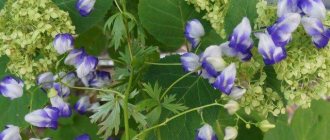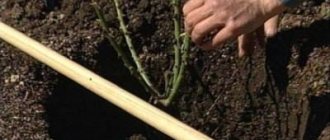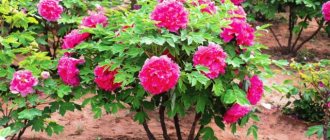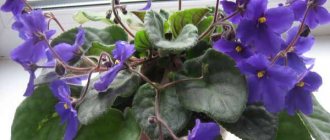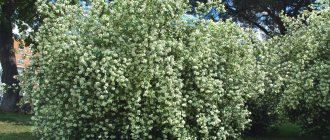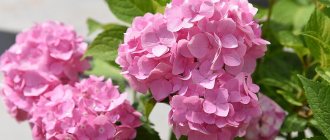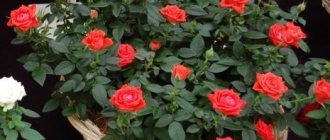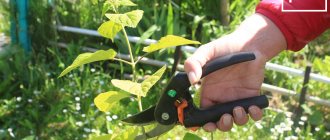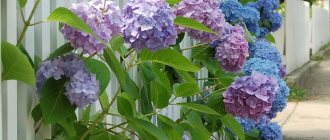Beautiful hydrangeas, varied in color and shape, have long been a decoration of many suburban areas and urban local areas. These plants are unpretentious, grow quickly, some even change the shade of inflorescences or leaves during the growth process. When choosing this crop, gardeners are often also interested in the resistance of certain hydrangeas to low temperatures.
Of all the numerous species and varieties of hydrangeas, the most winter-hardy ones are traditionally paniculate and tree-like ones; most summer residents choose them in the cold, often damp and little snowy winters of the middle zone, for example, in the Moscow region.
Representatives of other species of this initially heat-loving plant often freeze over in harsh winters in our latitudes, but among them you can also find those that can withstand the lowest temperatures even without shelter.
Here is a selection of the best winter-hardy varieties from various garden groups of hydrangeas - take note, among them there really are options for every taste and color.
Hydrangea paniculata Polar bear (Polar bear, Polar bear)
Dutch variety.
Shrub of medium growth rate, powerful, large (1.5-2 m in height and 1.5-1.9 m in width), with rigid, erect shoots. The leaves are large, ovoid, rich green.
The inflorescences are very large (20-40 cm in length), dense, cone-shaped. Sterile flowers with rounded petals with a diameter of 3-4 cm or more. The color changes from pistachio when blooming to boiling white (sometimes even turning pinkish) with age. Flowering on the shoots of the current year, from mid-summer to late autumn.
The variety is exceptionally frost-resistant (up to –40°C), very resistant to diseases and pests, unpretentious in care, and light-loving. Even when frozen, the shoots quickly recover. Protection from drafts is desirable.
- Hydrangea paniculata: the best varieties for the Moscow region (with photos, names and descriptions)
Chic plants for a chic garden - this is about paniculata hydrangea!
general information
Basically, the species diversity of the plant is more represented in the form of shrubs and small trees, and less in the form of vines. They are divided into evergreen varieties and deciduous. Siberia belongs to the 3-4th climatic zone, which is characterized by the following conditions:
- Spring is late and short.
- Summer is humid, which is a big advantage for growing hydrangea in Siberia. Most types of hydrangea are moisture-loving and do not tolerate dry weather.
- Autumn is short, starting from mid-to-late August.
- Winter is long, 7-9 months.
For different climatic zones, you need to choose the right types of hydrangea for Siberia. Temperatures range throughout Siberia in winter from -20 to -60 °C, in summer from 2 to 20 °C.
For successful cultivation, abundant flowering and reproduction, you need to follow several rules:
- The soil is neutral or acidic.
- Moderate watering, Hydrángea is a moisture-loving flower. Lack of moisture reduces the quantity and quality of flowers.
- Fertilizers are added 3 times during spring and autumn: in spring - when buds open;
- during the formation of flowers;
- before sheltering for the winter;
Advice! Seeds of some varieties may not have time to ripen in Siberian conditions, so it is better to propagate by cuttings or layering.
Hydrangea tree Bella Anna (Bella Anna)
The shrub is powerful, large (1-1.3 m in height and 1.5-2 m in width), with a fan-shaped crown, with rigid, erect shoots. The leaves are large, round, bright green, bright yellow in autumn.
The inflorescences are large (12-20 cm), spectacular, hemispherical in shape. Sterile flowers with pointed petals, small, with a light aroma. The color from the beginning of blooming until flowering is dark pink, almost raspberry. Flowering on the shoots of the current year, from early summer to late September. During the phase of full flower opening, the bush may “fall apart” under the weight of the shoots.
The variety is very frost-resistant (up to –30°C), demanding care, light-loving, but tolerates partial shade. Resistance to diseases is high, but with high air humidity it is susceptible to phyllostictosis and gray rot. Protection from drafts is desirable.
Feeding for growth and flowering
Throughout the growing season, gardeners monitor the condition of the root system and, as necessary, cover exposed roots with soil and mulch. Due to the high location of the root node, all baits are applied using the surface method in most cases. Phosphate balls are buried in the hole and spilled with a large amount of water. This procedure is necessary to stimulate stem growth. Similar fertilizing is applied once every 2 weeks before the formation of buds.
Nitrogen is necessary for hydrangeas to form full-fledged flower ovaries and supply oxygen to the roots. To do this, universal nitrogen fertilizer is diluted in warm water in a ratio of 1:10 and the holes are watered once every 2 weeks from June to September. Before hibernation, the shrub needs to strengthen the root system, so in October the plant is fertilized with potash bait.
In autumn, faded buds are cut off from hydrangeas, and the soil in the holes is sprinkled with mulch and insulation: sawdust, straw or spruce branches.
With proper care, hydrangea actively grows and in a few years turns into a gorgeous flowering shrub, ready to win the heart of any skeptic.
Hydrangea oakleaf Harmony (Harmony)
The shrub is powerful, very large (2-2.5 m in height), the shoots droop with age under the weight of the inflorescences. The leaves are large, dense, 3-7-lobed, with pubescence below, rich green, purple-scarlet in autumn.
The inflorescences are paniculate, large (20-30 cm in length), very dense, conical in shape, without a pronounced aroma. Sterile flowers with rounded petals with a diameter of 2-3 cm. The color is boiling white, at first with a light green tint; towards the end of flowering they may begin to turn pink. Flowering on the shoots of the current year, from early summer to late September.
The variety is exceptionally frost-resistant (down to –35°C), very resistant to diseases and pests, unpretentious in care, and light-loving. Protection from drafts is desirable.
How to grow large-leaved hydrangea and how to cover it for the winter
To ensure that large-leaved hydrangea survives the winter well, it is watered abundantly in dry autumn. Before the first frost, all inflorescences are cut off and the bush is wrapped in several layers of non-woven material. It is important that the covering material does not touch the upper buds. After some time, the bush is cleared of leaves. After freezing, they, despite the shelter, as a rule, are easily separated from the plant. Then the bush is again wrapped with lutrasil, agril, spunbond, etc.
The hydrangea is completely closed in October. There is no need to wait for the soil to freeze. For young plants, soil is the best shelter. The branches are bent to the ground and covered with earth or peat (layer 2-3 cm). The main thing is that the upper third or better the upper half of each branch is well covered.
Covering adult large-leaved hydrangeas can vary. For example, peat or sand is poured onto the central part of the bush. The branches are laid out in a “sun pattern”, pressed to the ground with wooden brackets, or tied into bunches, which are tied to metal hooks stuck into the ground. It is better to place spruce branches under the branches - it is more reliable.
Old bushes have thick branches and can break when bent. If they need to be preserved, wooden blocks are placed under the fold. To press down the branches, use boards or bricks. If one of the stems breaks, it doesn’t matter, it means it should have been cut out long ago, it’s too old.
The branches are covered with earth, dry leaves, pine needles or spruce branches on top. In the spring, after the snow melts, the plants need to be opened gradually. First - the central part. Bent branches should not be touched yet. In mid-April - early May, they can be released, but covered with lutrasil, if it is thin - in several layers. And keep the branches wrapped until the last frost, if you do not constantly live outside the city.
Some gardeners practice air-dry shelter for covering large-leaved hydrangeas for the winter, such as for roses (without shortening the shoots, of course). Cover the bases of the bushes with dry soil, bend the shoots, fix them in this position, and cover them with several layers of non-woven material or spruce branches. Then they build a strong frame over the bent plant (to withstand a layer of snow) from thick wire, boxes or 4 supports and boards and put something waterproof on top, most often roofing felt. It is important that the shelter is lightproof, otherwise in early spring the structure risks turning into a greenhouse.
Until cold weather sets in, small gaps are left below for ventilation. And during the first snowfall, the entire structure is covered with snow. As you can see, you can carry out the operation called “Covering large-leaved hydrangea” in different ways. It’s hard to say which is better. Maybe the answer depends on the specific winter, or maybe these options are intended for areas with different soil, air humidity and other features of the specific place where the hydrangeas grow. One thing is absolutely clear - the dry method is more labor-intensive.
Hydrangea macrophylla Mars (Mars)
The shrub is small, spreading (0.8-1.2 m in height and up to 1.5 m in width), with thin, erect shoots. The leaves are medium-sized, thin, rough, bright green, with a serrated edge.
The inflorescences are large (25-30 cm), round, umbrella-shaped. Sterile flowers with rounded petals with a diameter of 3-4 cm. The color is pink with a wide white edge; it can change to a bluer color depending on the acidity of the soil. Flowering on the shoots of the current year, from early summer to late September.
The variety is very frost-resistant (down to –28°C), light-loving, disease-resistant (especially powdery mildew), and easy to care for. Protection from drafts is desirable.
- Large-leaved hydrangea: varieties suitable for the climate of the Moscow region
Paniculate and tree-like hydrangeas are ideal for the Moscow region. But gardeners do not lose hope of cultivating something more exotic, for example, large-leaved hydrangea. We offer an overview of varieties that are grown in our climate.
Caring for large-leaved hydrangea in spring: feeding and pruning (with video)
When caring for large-leaved hydrangeas, the plants need to be fed several times during the season. In the spring, a complex fertilizer containing nitrogen, phosphorus, potassium and necessary microelements must be applied to the tree trunk circle. If you do not feed large-leaved hydrangea in the spring, you can hardly count on abundant flowering. It is convenient to use special mixtures of nutrients intended specifically for hydrangeas; they gently acidify the soil, creating favorable conditions for the life of the bush. Special fertilizers for hydrangeas, “Green Bool”, “ECOstyle” have proven themselves to be excellent. You can also use fertilizers for rhododendrons and azaleas to feed large-leaved hydrangeas. Hydrangeas respond well to feeding with herbal infusions. Two or three buckets of nutrient solution are poured under an adult bush.
In the first half of summer, nitrogen and potassium should predominate in fertilizing. In the second half of summer, fertilizing with potassium and phosphorus is repeated 1-2 times, without including nitrogen in the mixture, in order to create optimal conditions for the plant to prepare for winter. At the end of August, all feeding should be stopped. It is strictly not recommended to apply ash and lime under the bushes. Hydrangea does not tolerate drought well, so the soil at the base of the bush should always be moist, but stagnation of water is also harmful. It is recommended to mulch the soil in the spring with peat, bark, pine needles, straw, and grass.
In the spring, there is no need to rush into pruning large-leaved hydrangea, even if the branches at first glance look dead. Dry-looking buds can wake up even at the end of May - the very beginning of June. Only then will it become clear which of the branches are truly non-living. At this time, when pruning large-leaved hydrangea, all dry and weak shoots are cut out. A hydrangea bush older than 5 years can be rejuvenated by cutting 1/3 of the old shoots to ground level.
If you need to form a bush, be prepared to do this for two seasons. When caring for large-leaved hydrangea in the spring of the first year, shorten the main growths to strong buds and remove weak shoots. In autumn, several strong growths are formed, and on the main shoots there are many side branches. Of these, weak ones that violate the symmetry of the bush are pruned.
Watch the video “Pruning large-leaved hydrangea” to better understand how to shape the bush:
In the second year, inflorescences form on last year's growths. New strong shoots grow in the lower part of the bush. After flowering, you need to trim the faded shoots to strong buds and remove all weak shoots. This pattern is repeated in subsequent years.
Next, you will learn how to cover large-leaved hydrangea for the winter to protect the plant from the cold.
Hydrangea serrata Bluebird (Bluebird, Bluebird, Bluebird)
Japanese variety.
The shrub is fast-growing, medium-sized (up to 1.2 m in height and up to 1.5 m in width), strong, branched, with a spreading crown and shallow root system. The leaves are large, ovate, with a jagged edge, rich green, red-violet in autumn.
The inflorescences are of medium size (10-15 cm in diameter), in the shape of a slightly convex shield. The fertile flowers in the center of the inflorescence are very small, rich pink-purple or bright blue; sterile marginal flowers with a diameter of 2-3 cm, their color varies from pale pink or light purple to deep blue or purple, and can change shade with age. Flowering on the shoots of the current year, from mid-summer to late autumn.
The variety is winter-hardy (down to –25°C), resistant to diseases and pests, easy to care for, and light-loving. Protection from drafts is desirable.
Winter-hardy hydrangea varieties for Siberia
The climate of Siberia is harsh; not all plants can be grown successfully, especially hydrangeas. Although you can choose from a huge variety of breeding varieties and species:
- Large-leaved winter-hardy hydrangea varieties for Siberia: Endless Summer, Forever & Ever, You and Me, Hovaria, SchlossWackerbarth.
- Tree-like: Annabelle, Strong Annabelle, Invincibelle, Grandiflora.
- Paniculate varieties: Silver Dollar, Pinky Winky, Vanille Fraise, Sunday Fresh Magical Fire, LimeLight, Unique.
The most frost-resistant hydrangea varieties for Siberia are: Silver Dollar, Pinky Winky.
Silver Dollar
Hydrangea Silver Dollar is a large-flowered, tall, unpretentious plant variety. The flowers are snow-white, united in large cone-shaped inflorescences, which change color to soft pink towards the end of flowering. The shoots are erect, powerful, fast-growing, some specimens have a height of about 300 cm, on average the height ranges from 150 to 200 cm.
The stems are well developed and branched. This year's branches are green, last year's are brown. The leaves are oval-shaped, pointed at the end, with small teeth, rich green in color. Blooms from early-mid July to September.
Pinky Winky
Pinky Winky is a species of paniculata Hydrangea, which has an unusual feature: the flowers start out white, towards the middle of flowering they become a soft pink shade, then the color becomes dark crimson and finally dark red. The stem is strong, branched, grows from 1.6 m to 2.2 m. It grows quickly in width to 1.4-2 m.
The leaves are oval-shaped, pointed at the end, and change color from bright, rich green to purple. The first inflorescences appear in June, the last - mid-September - October. Pinky Winky hydrangea bushes can be grown in open ground in the southern regions of Siberia, in others they require transplanting into special containers for the winter.
Hydrangea Bretschneider Purple Queen
The shrub is very powerful and large (up to 3 m in height), densely branched, with a rounded crown, with powerful straight, densely leafy shoots. The leaves are large, oblong, pointed, slightly pubescent on the underside, rich green, yellow-brown in autumn.
This type of hydrangea in Russian-language gardening literature is often mistakenly called ground cover.
The inflorescences are medium-sized (about 15 cm in diameter), umbrella-shaped, slightly fragrant. Sterile flowers are small, with rounded petals. The color changes from white-pink when blooming to purple-red as it ages. Flowering is very abundant, on the shoots of the current year, until September.
The plants are very winter-hardy (down to –35°C), drought-resistant, very resistant to diseases and pests, easy to care for, and light-loving. Protection from drafts is desirable.
What to consider when planting: choice of location, timing, agricultural technology
Planting and caring for panicle hydrangea are relatively simple procedures. For cultivation, gardeners recommend choosing sunny or slightly shaded places. Despite the fact that the shrub can grow in shady areas, the lack of light negatively affects the condition of the crown and the activity of bud formation.
The second criterion that is worth paying attention to is the wind activity of the site. With regular exposure to wind and drafts, the crown freezes and loses its attractive appearance, and the plant itself stops developing. In this regard, the seat is selected in a protected place. For example, next to fences, hedges, or surrounded by other bushes and trees.
In the northern regions of the country, paniculata hydrangea is planted in the ground in the spring.
In the central and southern regions, it takes root equally well in both spring and autumn. Seedlings that have reached 4-5 years of age are used as planting material. It is at this age that the root system has the greatest potential for regeneration.
Landing video.
Agricultural technology:
- Planting holes for single bushes are dug up to 40 cm in depth and up to 60 cm in diameter. For hedges, a trench up to 1 m wide is dug. The optimal distance between bushes should be about 2-2.5 m.
- Before planting in open ground, the planting material is prepared: the longest roots are cut off and the side shoots are pinched, leaving about 3-4 pairs of buds on the bush.
- A layer of peat or black soil up to 15 cm deep is poured into the bottom of the planting pit. River sand mixed with garden soil in equal proportions is poured on top of it. After this, the hole is allowed to saturate with oxygen for 2-3 hours.
- The seedling is placed exactly in the center of the hole and sprinkled with garden soil. The soil along the root circle is mulched with peat or sawdust to prevent the rhizomes that make their way to the surface from drying out.
Disease prevention and pest protection
When all conditions are created for hydrangia on the site, it rarely gets sick. If light yellow spots suddenly appear on the plant, it means that chlorosis is developing. In this case, water the plant with a solution of potassium nitrate at a concentration of 4 g per 1 liter of water. After three days, do the same prophylaxis with a solution of ferrous sulfate in the same ratios. If dark oily spots appear on the foliage and stems, then the shrub is infected with downy mildew.
This happens with excessive humidity and increased heat conditions. The best way to combat this disease is with a copper-soap solution. To prepare it, take 15 g of copper sulfate and 150 g of green soap (contact insecticide) in a bucket of water. In summer, with high air humidity, gray rot may develop. Treat the affected leaves and stems with fungicides: “Skor”, “Topaz”, “Fitosporin-B”. When air humidity is low, bushes are attacked by spider mites and aphids. Treat them with soapy water.
Did you know? The Japanese associate the appearance of the most beautiful flower “aujisai” with the ascent of the little Buddha to earth. This was the hydrangea.
Preventative work to get rid of pests will be the removal of weeds where they breed . All hydrangea varieties listed in the article can withstand not only cold winters, but also polluted air. The right place for planting and proper care will give hydrangia long-lasting fragrant flowering even in regions with a harsh climate. Get yourself a few hardy varieties and delve into the world of amazing hydrangeas.
Forever & Ever hydrangea series
Based on the Early Sensation variety, another commercially successful Forever & Ever series was eventually created. Currently it consists of varieties Early Sensation (trade name Forever & Ever Pink/Blue), Red Sensation, White Ball, Pepermint, Fantasia. The varieties can withstand temperatures down to -20...-24 °C. Even with light shelter, plants are quite capable of surviving the winter without serious problems.
large-leaved hydrangea variety Fantasia
A remontant variety with a unique combination of colors: from light green to bright green, red and crimson.
variety of large-leaved hydrangea Red Sensation
The title translates as "Red Sensation". When artificially dyed, burgundy-red inflorescences can change color to purple-burgundy.
The bush is compact, 60–90 cm high. The inflorescences are spherical, 10–12 cm in diameter. At the beginning of flowering, the flowers are bright scarlet with a brilliant tint; by autumn they acquire a duller pastel color in burgundy tones. Winters under cover.
In the photo there is a variety of large-leaved hydrangea Forever & Ever Red
large-leaved hydrangea variety Peppermint
Delicate pink petals with a white border along the edges, inflorescences reach 20 cm in diameter.
A miniature bush 60–70 cm high. It is frost-resistant and does not require shelter.
Also popular from the same series are the snow-white White Ball and the bright blue Blue Heaven.
A FEW WORDS ABOUT HYDRANGEA
At first it was grown in indoor greenhouses and winter gardens , but then famous French flower breeders actively began breeding more frost-resistant varieties , and by the middle of the last century they had created more than a hundred of them.
In our country, this work began in the late 50s of the last century. Many domestic varieties have repeatedly received high awards at the most prestigious international exhibitions.
Despite its southern origin, hydrangea is a very unpretentious crop . When planting, it is important to correctly find a suitable site for it , because this crop does not tolerate transplantation very well. And in one place in good conditions it will grow for at least 60 years.
It is best to plant it in light partial shade so that the hot midday rays do not hit the plant. Hydrangea soils need neutral, fertile, loose and moist . Therefore, it needs regular watering. But water should not be allowed to stand under the plants.
Which variety is better to choose?
The huge selection of hydrangia varieties can cause confusion for a novice gardener. If you live in regions where frosts reach -30°C and above, then you need to understand all the intricacies of wintering and care for hydrangeas and choose the most suitable ones. You can purchase several types of plants and arrange them into beautiful compositions. If you have not yet grown hydrangea, then experts advise starting with the paniculate variety. It is the most frost-resistant, because by autumn the young stems are already covered with bark, which protects them from the cold. The varieties of paniculata hydrangea do not need to be wrapped for the winter; it is enough to simply hill up the base of the bush well.
Important! Even the hardiest varieties of garden hydrangea require wrapping before the first frost. In addition to covering materials, a good layer of snow can serve as an excellent insulation.
Hydrangia Bobo is called one of the most winter-hardy varieties. This is a dwarf shrub, which at the moment the buds open turns into a solid white and pink cap. Another variety of paniculate hydrangea that gardeners love is Polar Bear. The name itself suggests that it is suitable for areas with harsh climates. It blooms with huge white caps in the form of pyramids. In addition to all the listed types of hydrangia, you can choose the petiole type for middle latitudes. The following varieties are quite frost-resistant: Cordifolia, Petiolaris, Miranda. These are climbing plants that need support. For the winter, the vines need to be removed and covered.
Hydrangia Bobo winters quietly in temperatures down to -35°C, for which it received an award in 2009 at an exhibition in Belgium as the hardiest variety.
